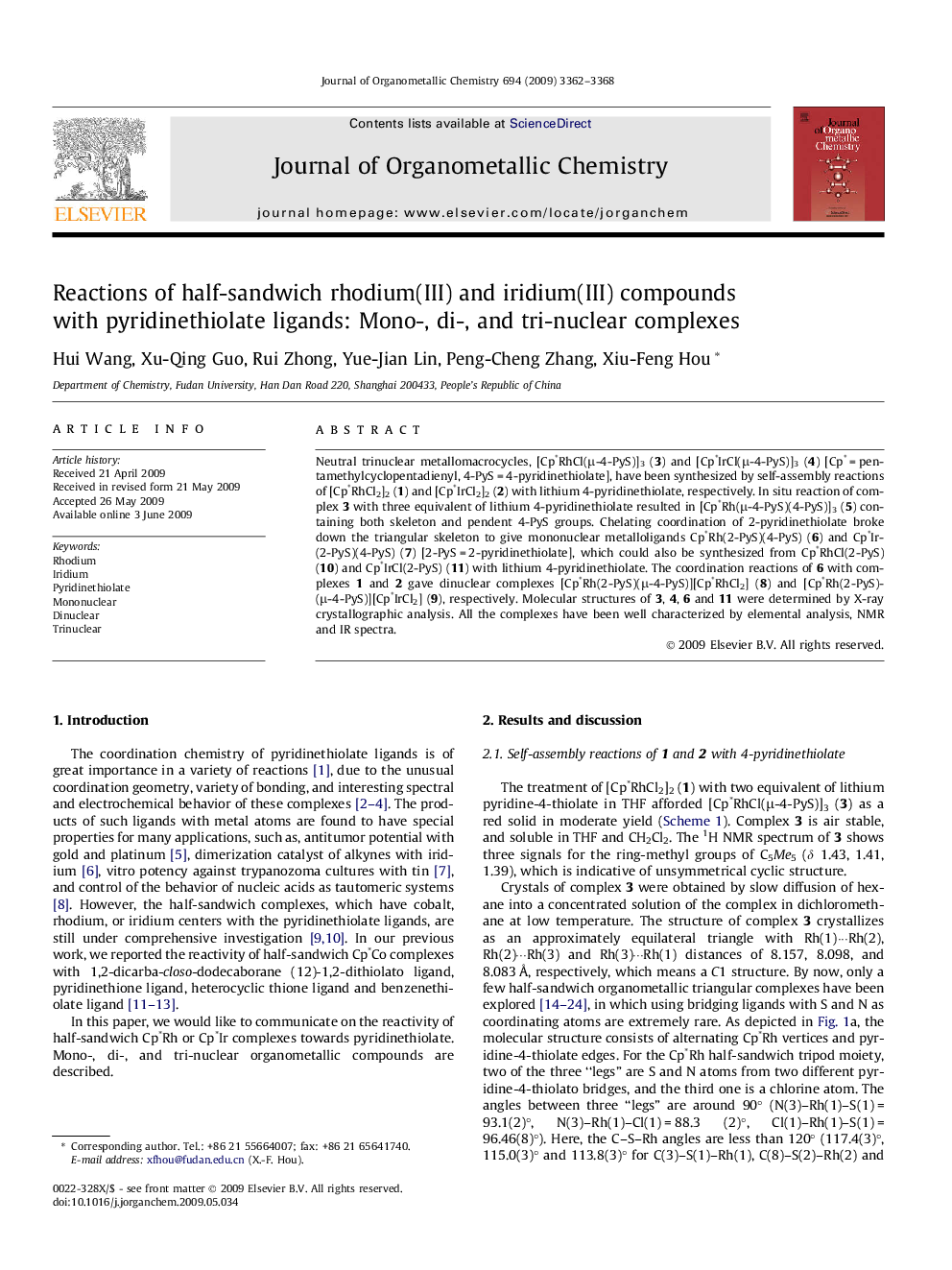| Article ID | Journal | Published Year | Pages | File Type |
|---|---|---|---|---|
| 1326299 | Journal of Organometallic Chemistry | 2009 | 7 Pages |
Neutral trinuclear metallomacrocycles, [Cp∗RhCl(μ-4-PyS)]3 (3) and [Cp∗IrCl(μ-4-PyS)]3 (4) [Cp∗ = pentamethylcyclopentadienyl, 4-PyS = 4-pyridinethiolate], have been synthesized by self-assembly reactions of [Cp∗RhCl2]2 (1) and [Cp∗IrCl2]2 (2) with lithium 4-pyridinethiolate, respectively. In situ reaction of complex 3 with three equivalent of lithium 4-pyridinethiolate resulted in [Cp∗Rh(μ-4-PyS)(4-PyS)]3 (5) containing both skeleton and pendent 4-PyS groups. Chelating coordination of 2-pyridinethiolate broke down the triangular skeleton to give mononuclear metalloligands Cp∗Rh(2-PyS)(4-PyS) (6) and Cp∗Ir(2-PyS)(4-PyS) (7) [2-PyS = 2-pyridinethiolate], which could also be synthesized from Cp∗RhCl(2-PyS) (10) and Cp∗IrCl(2-PyS) (11) with lithium 4-pyridinethiolate. The coordination reactions of 6 with complexes 1 and 2 gave dinuclear complexes [Cp∗Rh(2-PyS)(μ-4-PyS)][Cp∗RhCl2] (8) and [Cp∗Rh(2-PyS)(μ-4-PyS)][Cp∗IrCl2] (9), respectively. Molecular structures of 3, 4, 6 and 11 were determined by X-ray crystallographic analysis. All the complexes have been well characterized by elemental analysis, NMR and IR spectra.
Graphical abstractReactions of half-sandwich rhodium(III) and iridium(III) compounds with pyridinethiolate ligands afford eight organometallic complexes in which mono-, di-, and tri-nuclear Cp∗Rh or Cp∗Ir complexes were confirmed.Figure optionsDownload full-size imageDownload as PowerPoint slide
